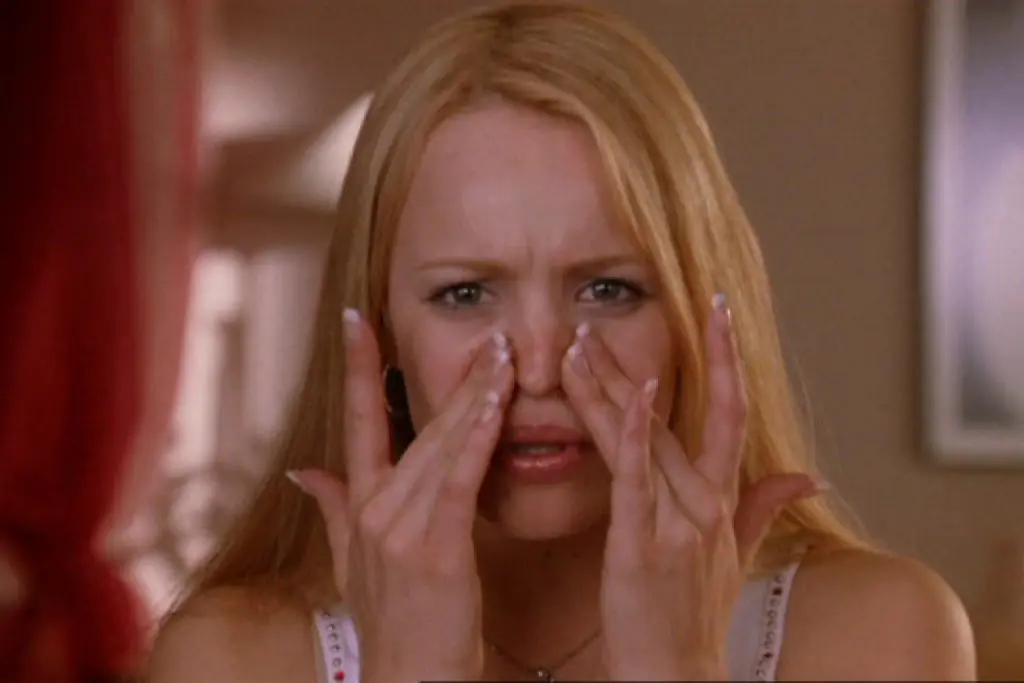
There are two types of breakouts: medium blackheads and whiteheads, which are mildly irritating and then, during the next phase of inflammation on the acne skin, pimples may appear, accompanied by pain or itching, purulent discharge. Huge, painful subcutaneous pimples are more commonly known as cysts or papules "These types of acne tend to be much deeper in the skin."
Unlike standard acne, cystic, painful and large subcutaneous pimples can cause severe discomfort and pain as they are deeply rooted in the skin tissue.
These cystic breakouts can happen anywhere, but dermatologists say they tend to be more common in the lower third of the face and around the chin. Additionally, often these deep or subcutaneous painful acne lesions are often associated with hormonal acne in women, which is why you may notice them appearing in one specific place every month on certain days of hormonal fluctuations in your body.
What Causes Severe Pimple Pain?
There is no simple, one specific cause for pimple pain “Cystic acne and painful pimples can be caused by a surge of hormones. Essentially, when your body's hormone levels shift, it sends your gland-producing oils into overdrive “The omentum itself can become a subcutaneous pimple sore because that it is filled with hardened excess oil,” adds Renee Cysts are more likely to cause similar painful pimples to appear, especially on the face and chin, as this area has a large number of sebaceous glands, which means a higher likelihood of breakouts and clogged pores .
There's also a chance that these pimples could be due to a fundamentally poor diet. We suggest you take a step back and examine your eating habits so you can try to identify the culprit foods behind the formation of cysts and painful pimples on your face. Try eliminating certain food groups and document in a notebook how the absence or consumption of each type of product affects the condition of your skin over the next 8 hours.
Eating certain foods every day can affect your skin's natural balance and cause inflammation, which can actually speed up the formation of cysts and pimples. This is especially true when it comes to the effects of dairy, meat, fried, sweet, and highly spicy foods on your skin.
“Research consistently shows that a high glycemic diet can trigger or worsen acne and pimple pain, especially when exposed to sugar. This means it's time to give up some of your favorite indulgences for the sake of your skin. According to this study, Some of the worst offenders include white bread, chocolate and milk.
Problematic skin needs special care. When hygiene is not maintained, the risk of a painful rash on the face increases. In addition to their unpleasant appearance, the growths cause severe physical discomfort.
With the accumulation of purulent contents in the lower layers, painful acne forms on the face. Eliminating them is quite difficult, since you need to identify the root cause of their appearance. A specialist can determine why the tumors have formed and prescribe appropriate treatment.
Causes
Initially, it is necessary to detect the provoking factor in the formation of an unpleasant rash on the face, due to which the therapy itself will become simpler and more effective.
It is advisable to consult with a highly qualified specialist rather than counteract the pathology yourself.
The following reasons can cause the appearance of painful acne:
- mechanical trauma to the skin (especially in the area of the nose or chin, where the inflammatory process occurs extremely often);
- overheating or hypothermia;
- improper compliance with hygiene rules;
- addictions (tobacco smoking, alcohol abuse);
- unbalanced diet;
- disturbances in the functioning of the endocrine system and central nervous system;
- hormonal imbalance, which is associated with age-related changes;
- allergy;
- genetic factor.
The above factors serve as concomitant circumstances for the formation of inflammation in the sebaceous glands. However, acne in all cases matures due to pathogenic microorganisms.
They live on everyone’s skin, but in the presence of a “favorable” environment they penetrate inside and provoke an inflammatory process, the treatment of which takes a long time.
There are a large number of types of rash, as well as causes. This must be taken into account when choosing treatment methods. On the other hand, identifying the provoking factor makes it possible to prevent the occurrence of a painful rash in the future.
Subcutaneous
A subcutaneous rash on the face occurs in stages: first, a slight thickening appears under the skin. It is characterized by pain and rapid growth.
Next, the inflammatory process and swelling are added. Such pimples take an extremely long time to mature, causing pain and discomfort. Sometimes the ripening process lasts 1-2 months. The rash is difficult to treat, and often leaves scars.
Reds
Papules - a red rash on the surface of the face is one of the most popular forms of acne. Minor, in some cases painful, affect approximately half of the facial skin and cause significant discomfort.
Domestic
In some cases, there are situations when foreign bacteria penetrate into the sebaceous glands. They mix with fatty acids, which produce sebaceous glands and clog the ducts.
Through them, sebum is secreted. As a result, an internal rash appears on the face.
The formation of a rash occurs in 2 stages: initially, compaction appears under the skin, redness and swelling. It rises above the skin up to 0.2 cm.
Then the affected area will be filled with purulent contents and the inflammation will turn white, which will indicate that the pimple has entered its final stage.
Structure of the boil
Painful acne on the face in all cases is associated with inflammation and suppuration. Such a rash is called a boil.
Its structure is as follows:
- after penetration of dirt into the ducts and disruption of sebum secretion, the inflammatory process begins;
- an abscess forms under the skin, which is surrounded by a membrane;
- it grows, in particular when bacteria appear in this place (this is how the body removes infected cells and prevents bacteria from entering the bloodstream);
- after 2 weeks, this growth opens through the skin and the purulent contents come out.
How to get rid
To eliminate this difficulty, complex therapy should be carried out. First of all, it is necessary to stop the inflammation.
At stage 2, it is necessary to normalize the functioning of the sebaceous glands themselves. It is necessary to prevent the occurrence of possible adverse consequences.
Drug treatment
Drug therapy with general systemic drugs is carried out in a situation where the provoking factor for the appearance of a painful rash on the face is a viral infection or a malfunction in the functioning of internal organs.
Taking this into account, the specialist will select effective medications. When the rash is caused by harmful bacteria, antibiotics must be taken.
The most effective are considered:
Video: Doctor's review of the drug Doxycycline
Acne on the cheeks, causes and treatment. More details here.
Cosmetic procedures
In certain situations, the patient needs the help of a specialized specialist. This is assumed when the lesion is large enough and the rash is spread over the entire face.
The cosmetologist chooses the procedure taking into account the type of skin. During this procedure, it is necessary to normalize the functioning of the sebaceous glands.
For minor inflammation, mesotherapy is performed. It involves the injection of anti-inflammatory drugs under the skin. In addition, injections of oxygen and ozone are effective.
Ripe pimples need to be removed. The doctor helps you do this without harming the skin.
It is possible to eliminate neoplasms in the process of implementing:
- disincrustation;
- mechanical cleaning;
- manual cleaning.
It is possible to prevent the possibility of inflammation through laser resurfacing or hard peeling.
Medical cosmetics
It is quite possible to accelerate the maturation, and therefore the treatment, of this rash.
The easiest way to do this is to apply the following medications to painful acne:
- clindovit, dalacin (antibiotics with bacteriostatic and bactericidal effects);
- levomekol (antimicrobial drug, healing and anti-inflammatory action);
- zinc, ichthyol, Vishnevsky ointment (disinfectants, anti-inflammatory agents that relieve discomfort and draw out pus).
These medications are quite effective and provide appropriate care to problematic skin.
Traditional methods
Traditional therapy offers various recipes for eliminating painful rashes on the face:
- Aloe juice draws pus out of pimples in the shortest possible time. Used as a compress to the damaged area.
- Regular steam baths with medicinal plants (for example, chamomile). The rash will mature and heal much faster.
- Washing with water and lemon juice in equal quantities.
Home Recipes
It is possible to carry out a large number of useful procedures at home:
- Infusion of salt. Take 2 tbsp. l. table salt. This salt dissolves in a glass of hot water. The mass is boiled, and then lotions are applied to the affected areas. They last for about 5 minutes.
- Sea salt. Daily baths with sea salt have a beneficial effect on the condition of the skin.
- Iodine. Painful pimples can be cauterized with iodine (prohibited for rashes on mucous membranes).
Therapy for facial rashes can be accelerated with anti-inflammatory masks and lotions that you prepare yourself:
- Aspirin and water. The medication tablet is crushed and dissolved in a small amount of water to a mushy mass. The mixture is applied directly to the pimple. Leaves on for 10 minutes, then rinses off.
- Syntomycin ointment. Mix with warm water and wipe the face, including inflamed areas, every day. The product helps to quickly restore damaged skin.
- Garlic. After treating your face with olive or vegetable oil, crushed garlic is applied to the damaged areas. Cover with gauze. The compress is kept for 20 minutes, after which the gauze is removed and the face is washed with chamomile infusion.
- Aloe. Pour 4-5 leaves of the plant into a glass of cold or mineral water. It is kept in water for about 60 minutes, then boiled. The infusion is cooled, the leaves are taken out and ground into a mushy state. The mass is applied to the face. Lasts approximately 15 minutes.
These recipes help to quickly restore damaged areas of facial skin.
Prevention measures
A consultation with a doctor will make it possible to determine what was the initial cause of the painful rash on the face. Measures to prevent this unpleasant phenomenon are important.
To prevent pathology it is necessary:
- reconsider your lifestyle;
- adjust your diet, get rid of bad habits;
- follow hygiene rules;
- if necessary, treat with ozone therapy;
- use cosmetics of appropriate quality.
By following the above instructions, it is possible to prevent the appearance of painful acne on the surface of the face.
Acne or acne is a common recurrent skin disease. In adolescence, rashes are considered a physiological norm, but in some patients, acne can manifest itself both in childhood and in adulthood as painful skin neoplasms. Most often, painful pimples appear on the face, but other areas of the body can also be affected. These acne forms under the skin. As they mature, they either come to the surface, or the inflammatory process penetrates into the deep layers of the dermis. In any case, the person experiences pain.
Why do painful acne appear?

According to most doctors, there are 2 main reasons why acne appears on the face - excessive secretion of male sex hormones (androgens) or their excessive effect on the body and the level of secretion of the sebaceous glands, depending on genetic predisposition. Dermatologists identify a number of factors that contribute to the production of androgens and the launch of the genetic mechanism:
- diseases of the endocrine system, obesity;
- hormonal imbalance associated with the menstrual cycle in women and pregnancy;
- taking hormonal medications (including contraceptives), anti-tuberculosis medications;
- in women involved in strength sports, when painful acne appears on the face, the reason may lie in the use of anabolic steroids in combination with B vitamins to build muscle mass;
- improper skin care, use of comedogenic cosmetics, excessive cleanliness and abuse of alcohol lotions;
- dietary habits, in which the majority of the diet consists of foods with a high level of carbohydrates;
- lack of microelements and vitamins, primarily zinc and vitamin A;
- mechanical damage to the skin (micro-wounds, scratching), making it easier for bacteria to penetrate the sebaceous ducts;
- hypothermia and overheating equally.
This is not a complete list of reasons and some of them have not yet been fully established.
How do acne form?
The development process that painful acne on the face goes through combines 4 interconnected links:
- excessive secretion of sebaceous secretion (sebum) by the glands;
- excessive keratinization and impaired detachment of the epidermis in the area of hair follicles;
- inflammation;
- growth of acnes bacteria.
The formation of a pimple begins with the fact that in the area of the hair follicle, where the excretory ducts of the sebaceous glands exit, the process of hyperkeratosis begins, in which the scales of the upper layer of the epidermis begin to quickly peel off. Mixing with the sebaceous secretion, they make it thicker, and it cannot come to the surface. At the same time, the sebaceous glands continue to function. This mixture of sebum and dead skin cells forms a plug that expands the outlet and clogs it - this is how open and closed comedones appear.
In such formations, acne bacteria, which are permanent residents of the skin, find a favorable nutrient environment for themselves and begin to actively multiply. As a result of their vital activity, many toxic substances are released that damage the walls of the ducts and glands. The sensitivity of the body's immune cells to acnes bacteria determines whether inflammatory acne or comedones will appear.
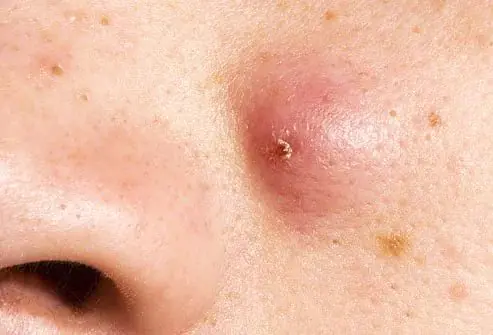
Another inhabitant of human skin is Staphylococcus aureus. When this microorganism penetrates the mouth of the hair follicle, a painful boil is formed - a boil.
Types of inflammatory elements
Acne on the face can be of several types:
- Comedones open and closed. Open comedones are the well-known blackheads; closed comedones, also called prosyanka, are white round-shaped compactions located under the skin.
- Papule. This element is a dense, hollow, red tubercle that rises above the skin. It does not form pus, and it may go away on its own within a few weeks or transform into a pustular element.
- Pustule. An inflammatory pimple with a cavity inside filled with pus. Tubercles. Such elements are formed in the last stages of the disease. They lie deep in the dermis and, as they develop, come to the surface of the skin, acquiring a spherical shape. The most severe form is considered to be spherical or conglobate acne, which affects not only the skin, but also fatty tissue.
- Cysts. Despite the traffic jams, the sebaceous glands work and secrete a secret that stretches the ducts and increases the glands themselves in volume and cysts form. They very often become inflamed with the formation of pus and turn into bluish deep nodules, called cystic acne.
With the evolution of any element of acne, as a rule, the abscess opens, the pus is rejected and a scar forms.
What can painful acne on the face mean?
Acne on the face is a signal that a malfunction has occurred in the body. Eastern medicine associates a specific area on the face with the condition of internal organs:
- on the lower jaw, under the chin - malfunction of the gastrointestinal tract, frequent constipation; painful subcutaneous pimples on the face in the temporal region - problems with the liver and bile ducts;
- acne running in a vertical stripe on the cheeks - the likelihood of kidney pathologies;
- Pimples under the cheekbones in women signal malfunctions of the mammary glands.
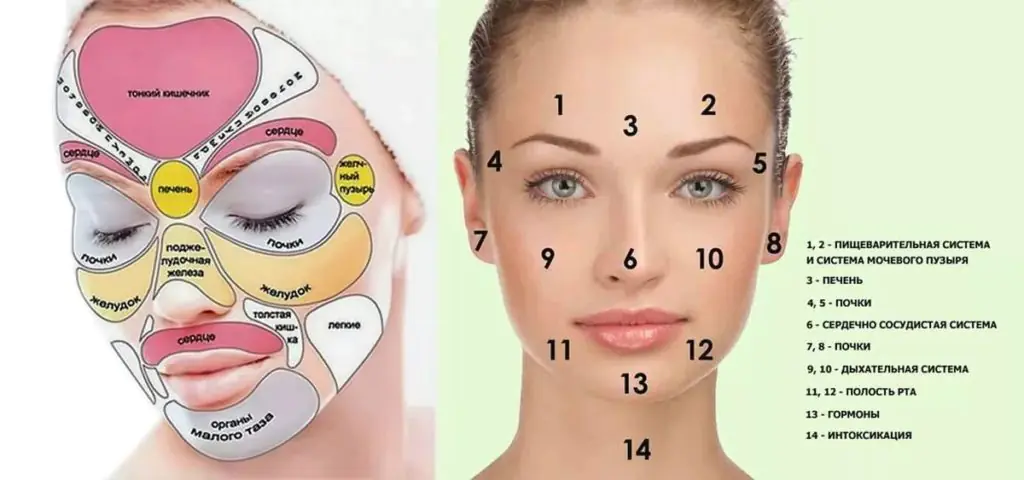
Naturally, this is only an assumption by oriental doctors and is absolutely no reason to establish a conclusion based on the location of acne and begin treatment of internal diseases.
Acne classification and symptoms
Painful acne can occur at any age. Acne of newborns, adolescents and adults is classified separately. Acne is also divided according to the severity of the disease, the most painful of which are nodular and conglobate acne.
Newborns often develop small pimples, which are closed and open comedones. They do not cause discomfort to infants and self-destruct within two weeks without requiring treatment.
Acne appears extremely rarely in childhood, and if it does appear, it usually occurs in children with adrenal gland dysfunction, so consultation with an endocrinologist is necessary. Such formations are rarely comedones. More often these are inflammatory and painful elements. The danger of such acne is that it can recur in adulthood and in a much more severe form.
In youth, acne on the face forms primarily in the T-zone (nose, chin, forehead). In most cases, juvenile acne consists of open and closed comedones, but in 20% of cases, acne causes serious physical suffering and is very painful. This form of acne requires medication under medical supervision.
During puberty, deep inflammatory elements, both single and multiple, can occur. They can merge with each other and form a large, painful abscess, which leaves behind scarring changes in the skin. Such acne is called conglobate acne.
Late acne that occurs in adulthood may be a consequence of juvenile acne or a separate disease caused by one or more of the factors described above.
Diagnostics
As a rule, it is enough for a dermatologist to examine the patient to make a diagnosis. Depending on the number and type of inflammatory elements, additional studies are prescribed to determine the cause.
In severe forms of the act that require treatment with antibacterial drugs, purulent contents are collected to determine the sensitivity of microorganisms to the active components of antibiotics.
General principles of treatment
Acne requires long-term and painstaking treatment, which must solve several problems at once:
- skin care and strengthening the immune system to prevent the recurrence of acne;
- elimination of existing spots, scars, stagnant spots;
- elimination of the inflammatory process; normalization of the secretion of the sebaceous glands.
Treatment of acne is carried out using local and systemic drugs, while in parallel with acne therapy, treatment of concomitant diseases is carried out. If acne is painful and inflamed, hardware techniques are not used. They have proven themselves well at the comedonal stage.
There is a high probability that you will need to undergo examination by other doctors: a gynecologist, an endocrinologist, a gastroenterologist.
The doctor determines the treatment method and medications individually. The choice depends on the severity of the disease, the cause, age and gender of the patient.
Internally diseased acne takes an average of 6 to 8 months to treat using a comprehensive approach.
Treatment with local medications
If mild to moderate acne is diagnosed, treatment is possible exclusively with local medications. It will be long-term (at least 3 months), but effective.
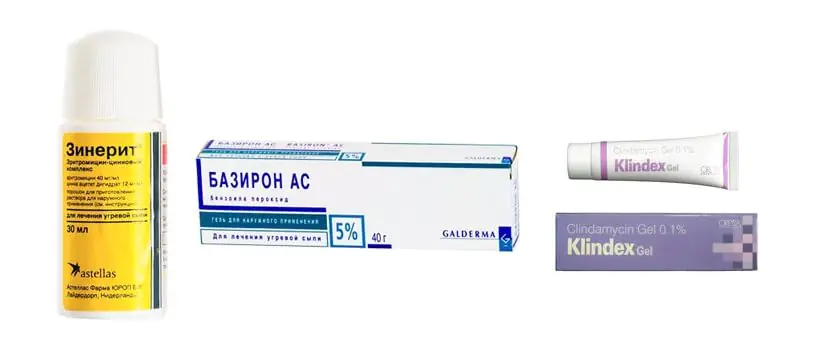
Products based on azelaic acid (Skinoren), benzoyl peroxide (Baziron AS) and retinoids (Roaccutane) are mainly used. The drugs reduce the secretion of the sebaceous glands, normalize the process of keratinization of epidermal cells and eliminate inflammatory processes.
Local antibiotics are prescribed together with them. They are not used separately as they are effective only against one element in the development of acne – bacteria. The most effective are erythromycin (Zinerit) and clindamycin (Clindamycin).
Curiosin, the main active ingredients of which are hyaluronic acid and zinc, is used to prevent the appearance of scars.
To stop acne from hurting too much, you can try applying Ichthyol ointment at night. It has anti-inflammatory, bactericidal and analgesic effects. User reviews confirm the great effectiveness of ichthyol against painful acne.
Preparations for oral administration
In the presence of severe forms of acne (cystic acne, conglobate acne, papulopustular rashes), retinoids are used:
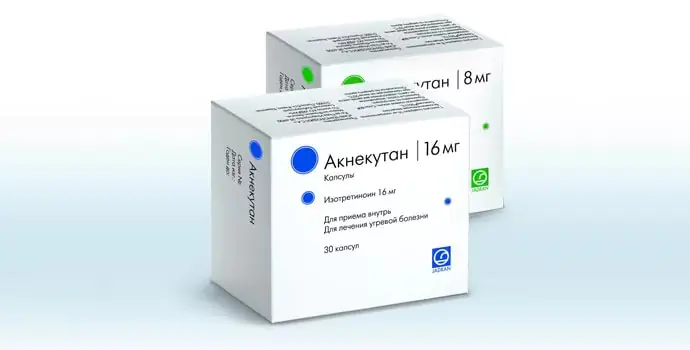
The active substances of these drugs reduce sebum production, relieve inflammation and affect the process of keratinization at the mouths of hair follicles. Treatment with retinoids is long-term and lasts up to 8 months. Their use must be under the constant supervision of a doctor, which is due to a large number of contraindications and side effects.
In some cases, antibiotics may be prescribed for acne. Of the systemic antibacterial medications, erythromycin and tetracycline are most often prescribed in combination with probiotics to prevent dysbiosis. Probiotics can also help relieve painful acne, as they have a beneficial effect on the gut and help boost immunity.
If the appearance of painful acne in women is associated with hormonal disorders, hormonal contraceptives are prescribed, such as Diane 35. The active substances of the drug reduce the secretion of the sebaceous glands by suppressing the activity of androgens.
Traditional methods of treatment
Traditional medicine can be used as an additional treatment for painful rashes. If a pimple hurts and there is severe redness, it is recommended to apply an aloe leaf to the inflamed area overnight. By morning, the pain will subside and the redness will become noticeably less.
As an auxiliary therapy, rubbing inflamed rashes with herbal decoctions is encouraged. Chamomile has a good calming, antiseptic and anti-inflammatory effect. The plant can also be used as a lotion.
Forecasts
Treatment of acne is a long process and it must be completed without taking breaks. A noticeable improvement in the condition at the beginning of therapy cannot serve as a reason to complete the course. The danger of acne is that at any moment the disease can arise in a more acute form than before.
Since acne is a chronic disease, it is important to know the causes of exacerbation and learn how to stop them in time. This will help avoid the formation of cosmetic skin defects (red, rough scars and stagnant spots). Unfortunately, if subcutaneous acne has already appeared, then irreversible processes begin in the epidermis and dermis and it will not be possible to return the skin to its previous ideal state.
Nevertheless, the drugs and techniques existing today are able to significantly alleviate the course of acne, prevent relapses and significantly reduce periods of remission.



